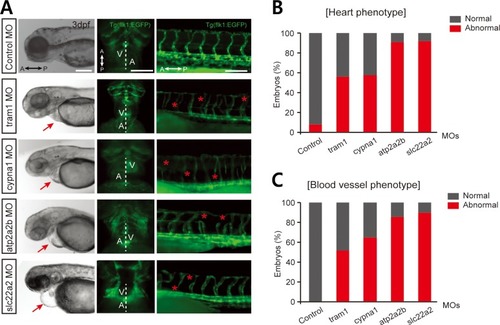- Title
-
Pathway-specific protein domains are predictive for human diseases
- Authors
- Shim, J.E., Kim, J.H., Shin, J., Lee, J.E., Lee, I.
- Source
- Full text @ PLoS Comput. Biol.
|
PHENOTYPE:
|
|
In vivo validation of candidate coronary artery disease (CAD) genes.(a) The sequence of translation-blocking MOs targeting candidate CAD genes used for this study. (b) Tg(flk1:EGFP) zebrafish embryos were injected with morpholinos (MOs) for candidate CAD genes and compared with control MO-injected embryos (morphants). The majority of morphants, except for apod morphants, exhibit gross morphological abnormalities, including a small brain, heart edema, and curved tail, at 3 days post-fertilization (scale bar = 500 μm). (c) Diagrams show the representative heart defects, such as no asymmetry (midline) and reversed asymmetry between ventricle and atrium, at 3 days post-fertilization. PHENOTYPE:
|

